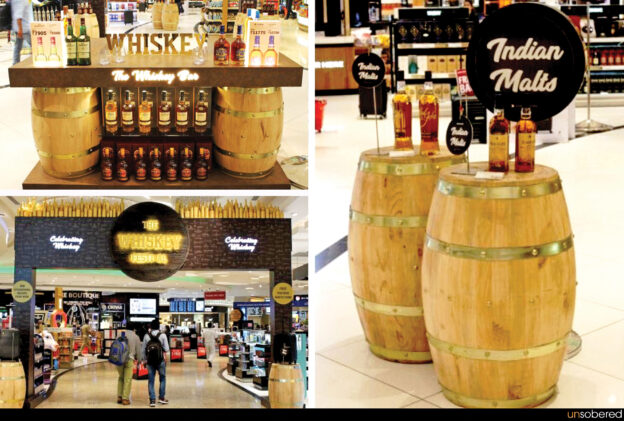GROWTH, TRENDS, COVID 19 IMPACT AND FORECASTS (2021-2026)
Travel Retail is the next great frontier of the Indian Retail Sector, and as people’s incomes rise, India’s position as a business powerhouse and tourist destination will also continue to solidify, leading to the growth and prosperity of this industry.
Covid-19 has all but wiped out the travel industry in India and the passenger numbers continue to be affected in India even in 2021 owing to existing lockdowns and restrictions in the wake of the second wave of the pandemic. In 2020, less than 3 million foreign tourists visited India with a dip of around 75% when compared to 2019 due to travel restrictions imposed. The Covid-19 outbreak is impacting duty-free shopping behaviour, spend, and browsing likelihood on a category level, with this being particularly the case with luxury items in India. As a result of the pandemic, shoppers have moved to online shopping in greater swathes than before, and several travel retail operators, including Delhi Duty-Free, have introduced new online retail services facilitating home delivery of travel retail exclusive and duty-absorbed products.
A combination of a large and growing population, increasing air connectivity, inbound tourism, and the growing disposable incomes and propensity to travel internationally by India’s middle class are some of the major factors fuelling the growth of India’s travel retail market.
As per a research, it is estimated that nearly 80% of the country’s duty-free shoppers are Indians which is quite unlike other markets in the region, such as Korea or Thailand, where most duty-free sales are from international travellers rather than local travellers. However, this is likely to change with the growth in international tourism in the country. While India accounts for only 4.8% of the Asia Pacific region’s total international tourist arrivals, its year-on-year growth rate has been well above the region’s average in recent years and as of 2019, India attracted nearly 17.9 million international tourists. The changes by the Indian Government to its e-visa regime are simplifying procedures, making it friendlier to international tourists and these developments will further help in the growth of India’s travel retail market.
The growth of e-commerce can be seen as part of a broader digitalisation of the travel industry in India and especially airports. This is in part due to younger profiles of travellers, growth of low-cost airlines, and airport privatisation. The introduction of Goods and Service Tax (GST) has decreased the cost and time of logistics and interstate transport which has made the Indian retail market more lucrative for foreign investors who can invest in single brands, multi brands, wholesale/ cash and carry, e-commerce and duty free.
Travel Retail is commonly used to describe the duty-free retail industry, in addition to all retail activities dedicated to travellers and tourists. A complete background analysis of the Indian Travel Retail Market which includes an assessment of the economy, market overview, market size estimation for key segments, and emerging trends in the market, market dynamics, and key company profiles are covered in the report. The Indian Travel Retail Market is segmented by Product Type into Fashion and Accessories, Wine & Spirits, Tobacco, Food & Confectionary, Fragrances and Cosmetics, Others (Stationery, Electronics, Watches, Jewelry, etc.) and by Distribution Channel into Airports, Airlines, Ferries and Other Distribution Channels. The report offers market size and forecasts for the Indian Travel Retail Market in terms of value (USD Billion) for all the above segments.
Airports Constitute the Major Retail Channels in India’s Travel Retail Market
Nearly 50% of an international airport’s revenue is generated from duty-free and travel retail activities and in terms of sheer size and range offered, the duty-free retail areas at Indira Gandhi International Airport in Delhi, Chhatrapati Shivaji International Airport in Mumbai are nothing less than high-end malls. The largest duty-free area in India is currently operated by Mumbai Duty-Free at Mumbai International Airport Limited (MIAL) followed by New Delhi International Airport Limited (DIAL) which is operated by New Delhi Duty-Free Services (DDFS). The duty-free revenue per passenger for New Delhi and Mumbai was the highest in India at USD 11 and 10 per passenger for FY2019.
The future of airport retail is defined by data, omnichannel, and personalisation. Online pre-purchase orders for airport pickup are more popular in the Indian market than anywhere else in the Asia Pacific region and there is a growing response by duty-free operators to the increasing flexible payment, ordering pickup, and delivery needs of customers. Delhi Duty-Free’s ‘Shop and Collect’ plan for instance offers an extra 10% discount to those who pre-book orders at the airport on their outbound journey and pick them upon return.

